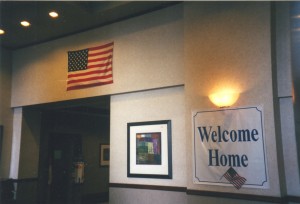
Welcome Home
Evacuees returning home to Galveston are just now seeing the devastation inflicted on their homes and businesses by Hurricane Ike. Undoubtedly, they are feeling overwhelmed by the recovery process ahead of them. Having been through a version of that process myself, I can offer words of hope and advice.
First, leverage the strength of your insurance company. Let me explain how that can work in your favor. I returned home to my apartment in the shadow of what used to be the World Trade Center after our neighborhood was closed and evacuated on 9-11-01. For several months I had been homeless as our neighborhood remained under the control of the National Guard, although during that time period, I was once allowed to return home for a half-hour, with a Guardman, to retrieve some personal effects. The Guardsman took neighbors into apartment buildings (once we produced our New York driver’s licenses proving our residency) in groups of five or six. When I came back for good, I contacted an environmental remediation company to remove the soot, ash and other contaminants from my home and my office. The project manager with whom I had spoken said that it would be “months” before he could send a staff person to my property to give me an estimate to perform the work, let alone actually start the work.
I asked if someone could come in the evening, after business hours. The answer was no. I asked about early mornings, before business hours, or on the weekend. The answer was no and no again. With relatively few companies certified to do this work and many thousands of people demanding these services, the queue was very long. And yet this was the critical task before I could safely return home. So I called my insurance company. I hoped that this would be the only major disaster that I would ever have to work through and I would never have to deal with an environmental remediation company again. But insurance companies deal with environmental remediation companies all of the time. They approve payment for these services for their policyholders. They can choose remediation companies as their preferred vendors for certain types of work. So the insurance company had the leverage that I did not.
I explained to the person who answered my insurance company’s CAT line (“CAT” is insurance speak for “catastrophe”) my situation and reminded her that the longer it would take to remediate my home, the longer I could remain in a hotel, which expense was covered by my homeowner’s insurance. She got the point. A few minutes after we concluded our conversation, my cell phone rang. It was the project manager from the environmental remediation company, the same man with whom I had spoken only minutes ago. He advised me to be at my apartment at 7:00 a.m. the next morning so that I could let his team in. At the time I was displaced, I was staying in Jersey City across the Hudson River from Manhattan. Most people commute to Lower Manhattan from Jersey City by the PATH train, but with the World Trade Center PATH train terminus destroyed, we had to take ferry routes that were put in place on an emergency basis. The routes and timetables changed from day to day, as the recovery was underway, so it could take some time to get from where I was staying to my home. Obviously, the project manager didn’t want to waste a trip to my apartment if I could not be there. “Oh,” I said, “you can have someone visit and give me an estimate tomorrow morning?” No, he answered, the insurance company called him on my behalf and he would have a team there to do the cleaning at 7:00 the very next morning.
Some of my neighbors spent months dealing with long waits and negotiating their spot in the queue. This is why you pay for insurance, so get full value for it. By the way, I recommended this tip to someone whose mother lived in Florida through the 2004 hurricane season when she was in the same situation (months and months to get an estimate before any work could be done). He reported that it worked for her as well. Another lesson I learned from 9-11 is that vendors often present the worst-case scenario in terms of service restoration because they would rather err on the side of caution. Then, of course, they look like heroes if they can restore service in a more reasonable time frame. I remember contacting my telecommunications provider to find out when landline service would be restored and was told that it could take months. It was back within two weeks. Bear this in mind when vendors are giving you bad news and don’t let it discourage you.
By the way, the photograph you see here is of the lobby of my apartment building upon our return home when civil authorities re-opened our building. It was quite an experience to return home after an absence to see what had happened to our neighborhood. This is undoubtedly the stress that residents in the footprint of Hurricane Ike are now experiencing.






